
Best Surgical Hospital Beds to Buy
When selecting surgical hospital beds, healthcare facilities require models offering superior positioning control, exceptional stability, and seamless accessory integration for successful perioperative care.
Key Takeaways:
- Surgical hospital beds feature specialized positioning for optimal surgical access
- Trendelenburg positioning is essential for many surgical procedures and recovery
- Key features include enhanced stability, radiolucent surfaces, and accessory compatibility
- Premium models offer advanced positioning memory, integrated scales, and superior controls
- Professional installation ensures proper setup and staff training
- Long-term value comes from durability, ease of cleaning, and robust construction
These specialized beds must support proper surgical access while ensuring patient safety through rock-solid construction and precise positioning capabilities.
Top Recommended Surgical Hospital Beds
Introduction to Surgical Hospital Beds
Surgical hospital beds differ significantly from standard medical beds due to their enhanced positioning precision, superior stability, and specialized features designed specifically for perioperative environments. From pre-surgical preparation through post-operative recovery, these beds serve as crucial platforms for successful surgical outcomes.
At MedShopDirect, we offer a carefully selected range of hospital beds designed to support surgical applications. Whether you're seeking high-precision Trendelenburg capability, enhanced surgical access, or superior positioning control, our collection includes options that meet demanding perioperative requirements.
Let's explore the essential features, benefits, and selection criteria for high-quality surgical hospital beds that support optimal surgical outcomes.
Essential Features of Surgical Hospital Beds
Modern surgical beds incorporate numerous specialized features:
Precision Positioning Capabilities
Advanced surgical hospital beds offer superior positioning control:
- True Trendelenburg/Reverse Trendelenburg - Precise angle control with digital feedback
- Lateral Tilt Options - Side-to-side positioning for surgical access
- Articulation Precision - Exact positioning to 1-degree increments
- Position Memory - Programmed settings for consistent surgical positioning
- One-Touch Controls - Rapid position changes for emergency situations
These positioning capabilities directly impact surgical access and outcomes.
Enhanced Stability and Construction
Surgical procedures demand exceptional bed stability:
- Reinforced Frame Construction - Prevents unwanted movement during procedures
- Locking Floor Mechanisms - Ensures absolute stability once positioned
- Weight Distribution Engineering - Maintains stability with asymmetric loads
- Anti-Drift Technology - Prevents subtle position changes during long procedures
- Reinforced Attachment Points - Securely supports surgical accessories
This stability is essential for precise surgical work and patient safety.
Surgical Accessibility Design
Specialized features enhance surgical team access:
- Radiolucent Surfaces - Compatible with intraoperative imaging
- Removable Head/Foot Sections - Creates customized access for specific procedures
- Sliding Top Capability - Expands reach without repositioning the patient
- Rail Systems - Supports attachment of surgical accessories and equipment
- Clearance Design - Accommodates C-arms and other imaging equipment
These access-focused features simplify surgical workflows and improve efficiency.
Key Benefits of Specialized Surgical Beds
Investing in quality surgical hospital beds delivers significant advantages:
Enhanced Surgical Access and Precision
Specialized beds significantly improve surgical team effectiveness:
- Optimal Patient Positioning - Maximizes surgical site access
- Stability During Procedures - Eliminates unwanted movement during delicate operations
- Customized Configurations - Adapts to specific procedural requirements
- Height Optimization - Maintains ergonomic working positions for surgical teams
- Accessory Integration - Seamlessly incorporates necessary surgical equipment
These access advantages directly impact procedural efficiency and outcomes.
Improved Perioperative Workflow
Quality surgical beds enhance operational efficiency:
- Rapid Configuration Changes - Streamlines transitions between procedures
- Standardized Positioning - Ensures consistent setup across similar procedures
- Simplified Transfer Process - Facilitates patient movement through surgical phases
- Control Accessibility - Allows position adjustments without breaking sterile field
- Intuitive Operation - Minimizes training requirements for surgical staff
These workflow enhancements support more efficient operating room utilization.
Patient Safety Enhancements
Advanced safety features protect vulnerable surgical patients:
- Secure Positioning - Maintains patient stability during procedures
- Pressure Management - Reduces risk during long surgical procedures
- Emergency Capabilities - Rapid position changes for critical situations
- Superior Side Rails - Prevents falls during pre- and post-operative phases
- Smooth Transitions - Minimizes patient disruption during position changes
These safety elements are essential for risk management in surgical settings.
Additional Surgical Hospital Bed Options
Beyond our top recommendations, these specialized beds address specific surgical needs:

Bariatric Surgical Bed
This specialized surgical bed combines the positioning capabilities required for surgical procedures with the reinforced structure and expanded dimensions of a bariatric hospital bed. The enhanced design accommodates higher weight capacities while maintaining full surgical functionality and stability.
Key Specifications
- Enhanced weight capacity for larger surgical patients
- Expanded width with reinforced frame structure
- Superior stability for bariatric surgical procedures
- Reinforced articulation points for reliable positioning
- Enhanced braking system for absolute stability
Ideal Applications
- Bariatric surgery programs
- Facilities serving diverse patient populations
- Surgical centers requiring maximum versatility
- Units with higher weight-capacity requirements

Ultra-Stable Surgical Bed with Floor Lock System
This specialized surgical bed features an exceptional floor lock system that creates unprecedented stability for delicate surgical procedures. The hospital-grade construction with advanced positioning capabilities makes it ideal for surgical environments requiring absolute bed immobility during procedures.
Key Specifications
- Industrial-grade floor lock system
- Superior stability for precision procedures
- Enhanced positioning accuracy
- Robust construction for surgical environments
- Advanced height adjustment range
Ideal Applications
- Procedures requiring exceptional stability
- Neurosurgical applications
- Microsurgical procedures
- Surgical centers with diverse case types

Split Frame Surgical Bed
This innovative split-frame design offers exceptional surgical access while maintaining superior stability and positioning capabilities. The advanced engineering allows for specialized patient positioning ideal for complex surgical procedures while providing unmatched surgical team access.
Key Specifications
- Split-frame design for enhanced surgical access
- Superior positioning capabilities
- Enhanced articulation control
- Increased weight capacity
- Advanced control systems for surgical precision
Ideal Applications
- Complex surgical procedures requiring specialized access
- Orthopedic surgical applications
- Vascular procedures
- Surgical centers with diverse procedural needs
Essential Features to Consider When Buying Surgical Beds
When evaluating surgical hospital beds for your facility, focus on these critical elements:
Positioning Precision and Range
Positioning capabilities directly impact surgical access and outcomes:
- Trendelenburg Angle Range - Verify maximum angles for proper surgical positioning
- Angle Precision Control - Assess accuracy of positioning adjustments
- Position Memory Features - Evaluate programmable settings for consistent positioning
- Digital Angle Feedback - Check for precise angle confirmation systems
- Lateral Tilt Capability - Consider needs for side-to-side positioning options
These positioning specifications should match your specific surgical specialties and requirements.
Stability and Construction Quality
Frame construction directly impacts surgical procedure safety:
- Floor Lock Systems - Evaluate mechanism for securing bed during procedures
- Frame Materials - Assess grade and quality of structural components
- Weight Testing Standards - Verify testing protocols for stability verification
- Articulation Joint Design - Examine engineering of moving components
- Brake Systems - Review lock mechanisms and fail-safe features
For surgical applications, stability features found in the best electric hospital beds are essential for procedural safety and precision.
Surgical Team Accessibility
Design elements that enhance surgical access are critical:
- Clearance Profile - Assess space for surgeon positioning and equipment access
- Removable Components - Verify quick-release sections for customized access
- Rail System Compatibility - Check accommodation of surgical accessories
- C-Arm Compatibility - Evaluate design for radiological access
- Control Positioning - Assess accessibility of controls during procedures
These accessibility features directly impact surgical efficiency and procedural success.
Surgical Bed Compatibility with Imaging Equipment
Radiolucent features enhance diagnostic capabilities:
Imaging Integration Considerations
Modern surgical beds often incorporate imaging-friendly design:
- Radiolucent Deck Sections - Allow imaging without patient repositioning
- C-Arm Access Design - Accommodate intraoperative radiological equipment
- Removable Components - Create unobstructed imaging fields
- Cable Management - Prevent interference with imaging equipment
- Alignment Markers - Facilitate proper positioning for imaging
The best hospital beds for sale for surgical applications feature these imaging-friendly design elements.
Specialized Imaging-Friendly Models
Some surgical beds offer enhanced imaging capabilities:
- Full-Length Radiolucent Tops - Support comprehensive imaging access
- Floating Tabletop Options - Allow patient movement without repositioning
- Carbon Fiber Components - Provide superior radiolucency
- Integrated Reference Markers - Support precise imaging positioning
- Modular Design - Allow customization for specific imaging needs
These specialized features enhance diagnostic capabilities during surgical procedures.
Perioperative Mattress Considerations
Specialized mattresses enhance both surgical access and patient protection:
Surgical-Specific Mattress Features
Standard hospital bed mattress designs require modifications for surgical use:
- Sectional Design - Separate components that move with bed articulation
- Enhanced Pressure Distribution - Critical for long surgical procedures
- Fluid-Proof Covering - Complete protection against surgical fluids
- Radiolucent Materials - Compatible with intraoperative imaging
- Anti-Static Properties - Safety enhancement for surgical environments
These specialized surfaces enhance both surgical team access and patient protection.
Infection Control Prioritization
Surgical environments demand exceptional sanitization capabilities:
- Seamless Coverings - Prevent fluid intrusion into mattress core
- Chemical Resistance - Withstand surgical-grade disinfectants
- Removable Sections - Allow thorough cleaning of all components
- Anti-Microbial Treatments - Provide additional protection between cases
- Weld-Free Seams - Eliminate potential harbors for contamination
These infection control features support surgical sterility protocols.
Implementation and Installation
Proper setup is critical for surgical bed safety and functionality:
Professional Installation Services
Expert installation ensures safety and functionality:
- Certified Technicians - Specially trained in surgical bed setup
- Testing Protocols - Comprehensive verification of all functions
- Staff Training - Instruction on proper operation and safety features
- Documentation - Complete records of installation specifications
- Integration Support - Connection with existing systems and equipment
Professional installation should be considered essential for surgical beds.
Surgical Staff Training Components
Comprehensive training maximizes surgical bed utility:
- Position Programming - Creating standard surgical setups
- Emergency Protocols - Rapid response for urgent situations
- Cleaning Procedures - Proper sanitization between surgical cases
- Accessory Integration - Attachment of surgical tools and equipment
- Troubleshooting Skills - Addressing minor issues during procedures
Staff competency with specialized bed features directly impacts surgical workflow efficiency.
Maintenance and Longevity
Proper care extends surgical bed lifespan and effectiveness:
Safety-Focused Maintenance Protocols
Regular inspection is critical for surgical safety:
- Pre-Case Verification - Confirmation of proper function before procedures
- Weekly Functional Testing - Verification of all mechanisms
- Monthly Thorough Examination - Comprehensive assessment of all systems
- Quarterly Professional Inspection - Expert evaluation of critical components
- Annual Preventive Maintenance - Complete service by qualified technicians
Consistent maintenance prevents disruptions during critical surgical procedures.
Cleaning and Sanitization
Thorough hospital bed cleaning is essential in surgical settings:
- Post-Case Protocol - Comprehensive cleaning after each procedure
- Approved Surgical-Grade Cleaners - Products that don't compromise surfaces
- Detail-Focused Technique - Attention to all crevices and mechanisms
- Documentation Practices - Recording of cleaning for infection control compliance
- Staff Protection - Safe cleaning protocols for personnel
Sanitization requirements for surgical beds exceed standard hospital protocols.
Comparing Surgical Beds to Standard Hospital Beds
Understanding key differences helps inform purchasing decisions:
Design Distinctions
Surgical beds differ fundamentally from standard models:
- Stability Focus - Enhanced locking vs. standard braking systems
- Positioning Precision - Exact angle control vs. basic articulation
- Access Prioritization - Surgical team access vs. patient comfort
- Imaging Compatibility - Radiolucent components vs. standard construction
- Control Sophistication - Advanced positioning systems vs. basic functionality
While standard beds prioritize patient comfort and basic care, surgical models focus on procedural support and team access.
When Standard Beds May Be Adapted
Some facilities adapt standard beds for limited surgical applications:
- Minor Procedures - Simple interventions with minimal positioning requirements
- Emergency Situations - When specialized beds aren't available
- Recovery Phases - Post-operative care after transfer from specialized surgical tables
- Budget Constraints - Temporary solutions pending specialized equipment acquisition
- Low-Volume Settings - Facilities with limited surgical caseloads
These adaptations should be thoroughly evaluated by surgical and safety teams.
Specialized Applications in Surgical Settings
Different surgical specialties benefit from specific bed features:
Orthopedic Surgical Applications
Orthopedic procedures have unique bed requirements:
- Enhanced Stability - Critical for procedures involving significant force
- Radiolucent Platforms - Essential for intraoperative imaging
- Traction Compatibility - Attachment points for orthopedic equipment
- Sectional Removal - Creates access for extremity procedures
- Enhanced Weight Capacity - Accommodates casting materials and equipment
These specialized features support successful orthopedic interventions.
Neurosurgical Considerations
Neurological procedures demand exceptional precision:
- Absolute Stability - Prevents even microscopic movement
- Fine Positioning Control - Supports optimal surgical approach
- Head Fixation Compatibility - Accommodates specialized equipment
- Imaging Integration - Supports intraoperative navigation systems
- Pressure Management - Critical for lengthy neurosurgical procedures
For facilities with psychiatric patients requiring surgery, understanding best psychiatric hospital beds features helps bridge specialized care requirements.
General Surgical Requirements
Most general surgical procedures benefit from:
- Trendelenburg Positioning - Supports abdominal access
- Height Adjustment Range - Accommodates different surgeon preferences
- Quick-Change Capability - Adapts to evolving surgical needs
- Accessory Rails - Supports retractors and other surgical tools
- Infection Control Design - Facilitates thorough cleaning between cases
These features support efficient general surgical workflows while maintaining safety. For facilities that also handle obstetric surgeries, understanding the specialized requirements of hospital birthing beds can help in selecting beds with crossover capabilities for both general and obstetric surgical applications.
Emerging Technology in Surgical Bed Design
The evolution of surgical hospital beds continues with new innovations:
Advanced Control Systems
Modern surgical beds incorporate sophisticated electronic controls:
- Touch-Screen Interfaces - Intuitive control of multiple functions
- Remote Operation - Sterile control options for intraoperative adjustments
- Position Synchronization - Coordinated movement of multiple bed sections
- Automated Sequences - Programmed transitions between surgical positions
- Integration with OR Systems - Connection with other operating room equipment
These control advances enhance both efficiency and precision in surgical environments.
Enhanced Patient Monitoring Integration
Cutting-edge beds now incorporate monitoring capabilities:
- Integrated Weight Scales - Continuous patient weight monitoring
- Pressure Mapping - Real-time feedback on pressure distribution
- Position Documentation - Automatic recording of surgical positioning
- Vital Sign Integration - Connection with patient monitoring systems
- Data Transmission - Communication with electronic medical records
These monitoring features support comprehensive surgical documentation and patient safety.
Conclusion and Recommendations
Surgical hospital beds represent specialized equipment that balances procedural functionality with patient safety and surgical team efficiency. When selecting these specialized beds, focus on positioning precision, absolute stability, surgical access design, and compatibility with specialty-specific accessories and equipment.
The best surgical beds combine comprehensive clinical features with hospital-grade durability designed for the demanding environment of surgical departments, creating stable platforms that support successful procedures and positive patient outcomes.
For personalized guidance on selecting the right surgical hospital beds for your specific facility needs, contact our healthcare equipment specialists who can provide detailed information on available models, features, pricing options, and implementation support based on your surgical specialties and requirements.
For information about other specialized medical beds, explore our resources on types of electric beds for home use and best fully electric hospital beds for home use, which cover many of the same quality and feature considerations relevant to surgical bed selection.





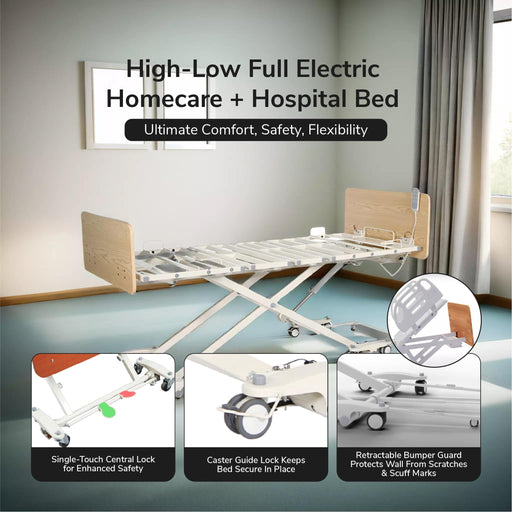
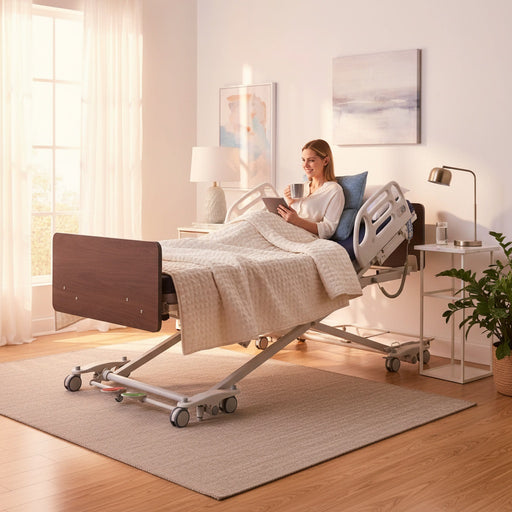
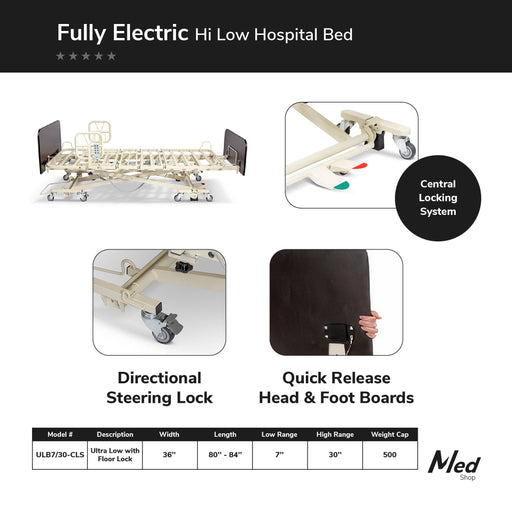
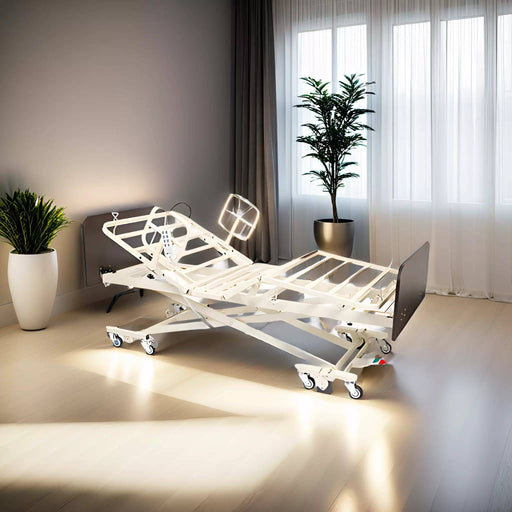


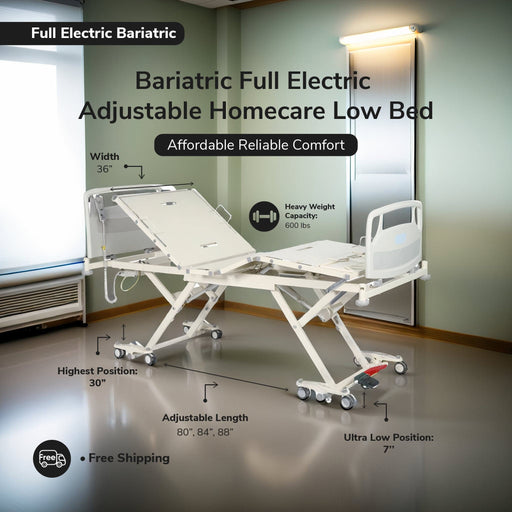
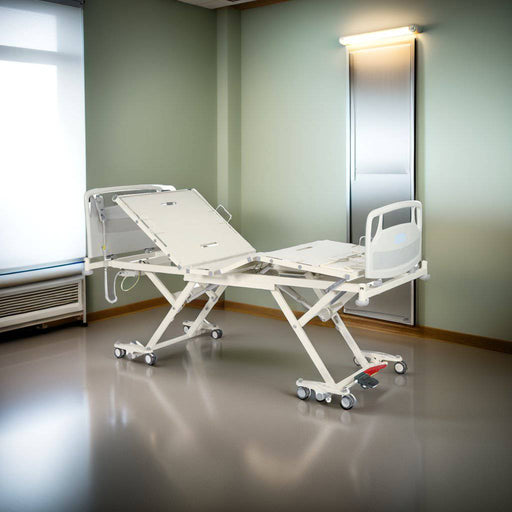
Leave a comment